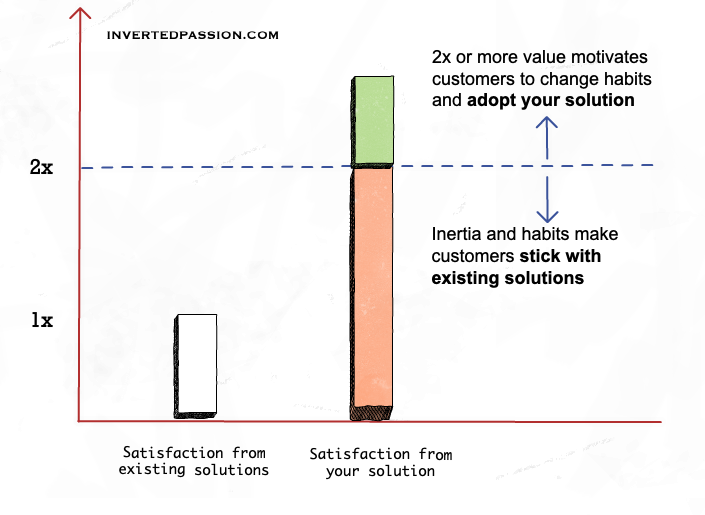People have busy lives and they usually don’t think much about the products and services they use in their lives. It’s a myth that people are on a constant lookout to (marginally) improve their lives. The reality is that unless the value delivered by a new product or service is substantially higher, most people will not change how they live their life and by virtue of that, they won’t change what they buy or use.

It doesn’t mean that people don’t want to improve their lives at all. New products arrive in the market and replace the old ones all the time. But displacement of existing solutions happens only if people expect that the new product will have a material difference in their quality of life (at work or at home). The important keyword here is material. Slight improvements over existing solutions are usually not worth it for people to overcome inertia, change their habits and start using your solution.
For example, launching a phone like iPhone is difficult for a startup today (because complex things necessarily start simple) but even if it is possible, customers won’t switch to a new phone unless there’s something materially different about it for customers.
How much is this material difference? Well, there’s no math to it but a good thumb rule is to aim for at least 2x improvement over the existing solutions on parameters that customers care about. Any improvement below 2x is a marginal improvement in the eyes of the customer and you risk them surrendering to their day-to-day habits that include their familiarity with existing solutions.
And as we saw earlier, even a >2x improvement on a parameter that customers don’t care about isn’t enough. The improvement has to be 2x and it has to be on an aspect (price, quality, convenience, etc.) that customers care about.
The classic example of 2x improvement is Google. Even though it wasn’t the first search engine in the market, it quickly became the number one player in the market because its search results and speed wasn’t just marginally better, it was significantly better (thanks to the PageRank innovation they came up with, making Google an example of technology-led startup).
Remember: you might think your offering is better than competitor’s but unless it’s 2x better, customers will stick to the tried and tested.
This essay is part of my book on mental models for startup founders.
Icon (in the image) credits: Jigsaw by Kangrif from the Noun Project and Jigsaw by Adrien Coquet from the Noun Project.
Join 150k+ followers
Follow @paraschopra